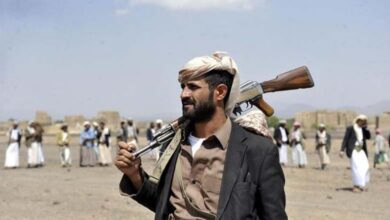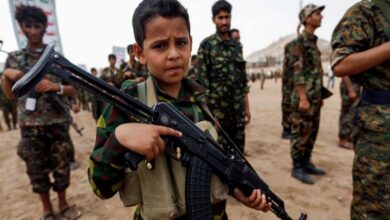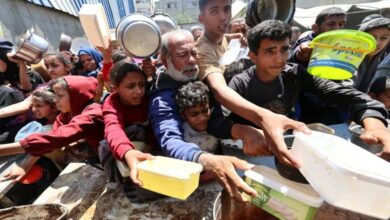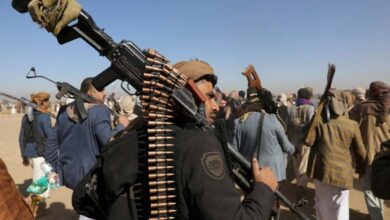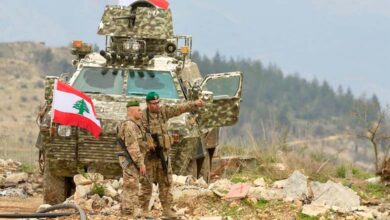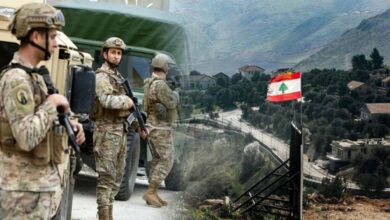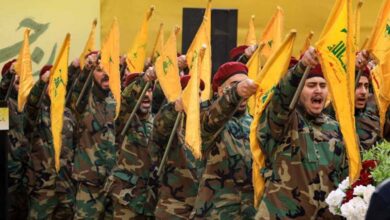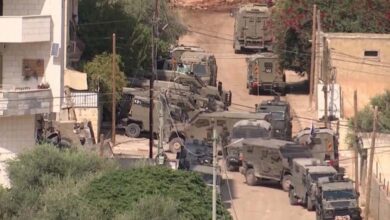“Impairment Operations”: The Houthi Tool for Spreading Terrorism in Southern Yemen
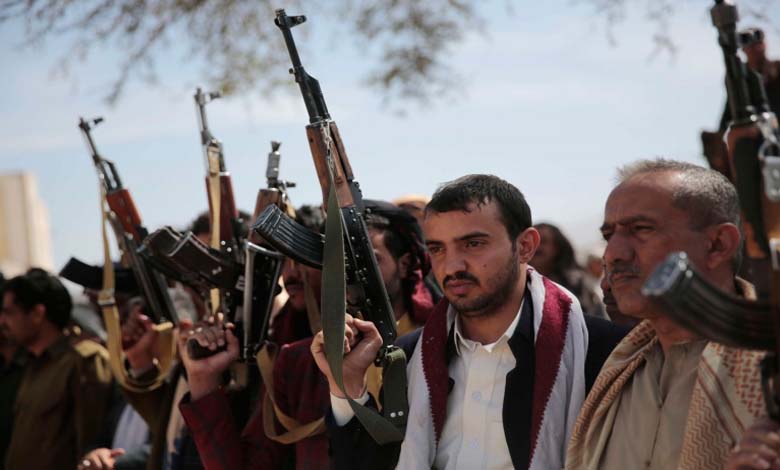
Houthi militias have failed to achieve any breakthrough in the liberated Yemeni areas, so they resorted to unleashing their malicious hand, or what they call “impairment operations,” as a tool to spread terrorism in the south.
Impairment operations are a military unit built by Houthi militias about 6 months ago in what is known as their military regions (fourth, fifth, seventh, and sixth). It specifically falls under the purview of the engineering teams responsible for planting explosive devices and mines.
This malicious unit specializes in planting explosive devices and mines in the liberated areas behind the frontlines. Houthi militias assign members of this unit to infiltrate and carry out suicide operations deep within the liberated areas, typically targeting passing vehicles, whether civilian or military.
“Houthi militias established the ‘Impairment Operations‘ unit in what is called the fourth military region, and its operations theater covers Taez, Al-Dhale, Lahij, Al-Bayda, Dhamar, and Ibb. They use remotely detonated explosive devices for carrying out their terrorist operations.”
Video clips showed several terrorist bombings that targeted civilian vehicles and military patrols in the governorates of Taez and Lahij, mostly resulting in civilian casualties. These are carried out by the so-called “Impairment Operations” unit.
Revelations of the captured members shed light on the extent of the Houthi militias‘ criminality, considering all the people as targets, without distinction between civilians and military personnel, or between conflict zones and public roads. The cell’s crimes even targeted civilian ambulances and motorcycles.
The joint forces had apprehended a cell affiliated with the Houthi “Impairment Operations” unit after infiltrating into the al-Barah front west of Taez province in August last year, successfully thwarting one of the most dangerous terrorist operations by Houthi militias.
Shocking Confessions A member of the captured cell, Ous Ali Al-Falahi, known as “Abu Raed,” admitted in his confessions to their involvement in planting explosive devices on public roads, mostly in Taez province. These devices targeted civilians and were remotely detonated.
Al-Falahi, originally from Dhamar province, joined Houthi militias in 2021. He confessed that “Houthi militias provided him with sectarian and military training for two months and additional courses in engineering specialized in mines and explosive devices.”
He pointed out that “the militias trained him along with more than 150 individuals to plant anti-vehicle explosive devices on the sides of roads and anti-personnel mines weighing half a kilogram, all of which are remotely detonated.”
He was also trained by Houthi militias in specialized courses on disguising explosive devices and how to direct them in the engineering department in the fourth military region led by the terrorist Abdul Latif Al-Mahdi.
The captured terrorist revealed that the “Impairment Operations” unit in the fourth Houthi region is led by the Houthi leader known as “Abu Harb.” The engineering section is managed by Abu Yunus Al-Janati, and the third section is the mine clearance unit responsible for clearing mines planted during ground attacks, led by Abu Yusuf Al-Gharbani.
explained that the tasks of the “Impairment Operations” unit are “to assign suicide elements to infiltrate the liberated areas and plant explosive devices on roads and in homes, then remotely detonate them to target civilians and passersby.”
The terrorist Al-Falahi admitted to carrying out four terrorist operations in the Taez and Lahij fronts. The first was in the “Kurash” front, targeting an “ambulance.” The second was also in the “Kurash” front, in the same location, where he said, “We planted 16 explosive devices.”
He explained that the third operation was in the Hayfan district, specifically in the “Salu” front, where they “infiltrated the liberated areas and planted explosive devices on the main road.”
added that the fourth operation took place in Hays, was monitored for 4 hours, and they prepared explosive devices and planted them on the main road, targeting patrols and gatherings of individuals, and they were remotely detonated.
As for the fifth operation, he said, “We attempted to carry it out in the al-Barah area, but it failed. We were tasked with moving from Dhamar to the city of Taez, and we reached the Salih city, where we were given 3 additional explosive devices and transported them to Mount Arf. We surveyed the area for two days and were tasked with planting the three explosive devices on the asphalt road leading to the city of Taez.”
He continued, “When we descended into the areas, we were surprised by a counterattack by the joint forces,” noting that “the joint forces’ ambush resulted in 2 deaths and 2 injuries.”
Vigilance of the Joint Forces On the other hand, another member of the cell, Ali Masad Nasser Al-Falahi, stated that “Houthi militias recruited him from a sports field in Dhamar city, and he underwent specialized courses, including 70 days of training. After that, he received training in mine and explosive device engineering. After completing the course, he was sent to the fourth military region as part of the ‘Impairment Operations’ unit.”
added that “Houthi militias assigned him to plant 200 mines and explosive devices in the ‘Bayda Al-Souma’ front, and he planted them on roads and advanced positions. Later, he was transferred to the border fronts with southern Yemen from the direction of Taez. He was tasked with planting explosive devices and mines in Al-Masaymir and Al-Azraq in Lahij and Al-Dhale, the border areas with the Ma’wiyah district east of Taez, under the supervision of the Houthi leader Abu Haydar Al-Asali.”
He clarified that “his mission continued on the border fronts of Lahij from the direction of Taez for two months before being transferred by the militias to the Hayfan front to work with the leader called Abu Haydar, who is the commander of the ‘Impairment Operations’ detachment.”
pointed out that “Houthi militias resumed training their members with what is called the ‘Security Team,’ which includes infiltrations, mountain-to-mountain assaults, and intensive training on heavy and light weapons.”
noted that “Houthi militias assigned him, after completing his course, to stay at the al-Barah front, one of the fronts on the western coast, and work there for two months in planting explosive devices.”
admitted that “after the formation of the ‘Impairment Operations’ unit, Houthi militias pushed their specialized members in planting explosive devices to this dangerous unit.”
The cell member confessed that he “participated in 7 terrorist operations, including in al-Barah, targeting two military patrols, and the second was in the same area. The third was in Kurash Hamala, Al-Lahij, targeting gatherings of individuals. The fourth targeted a patrol. and the fifth targeted patrols in the same area. After that, he was assigned to plant explosive devices in Taez city. In the last operation, we fell into the ambush of the joint forces.”
In the personal phones of the cell members. the joint forces found documentation of some of the crimes committed by the Houthi “Impairment Operations” unit,. showing organized and systematic terrorist operations targeting civilians and military personnel in the southern Yemen governorate of Taez.


